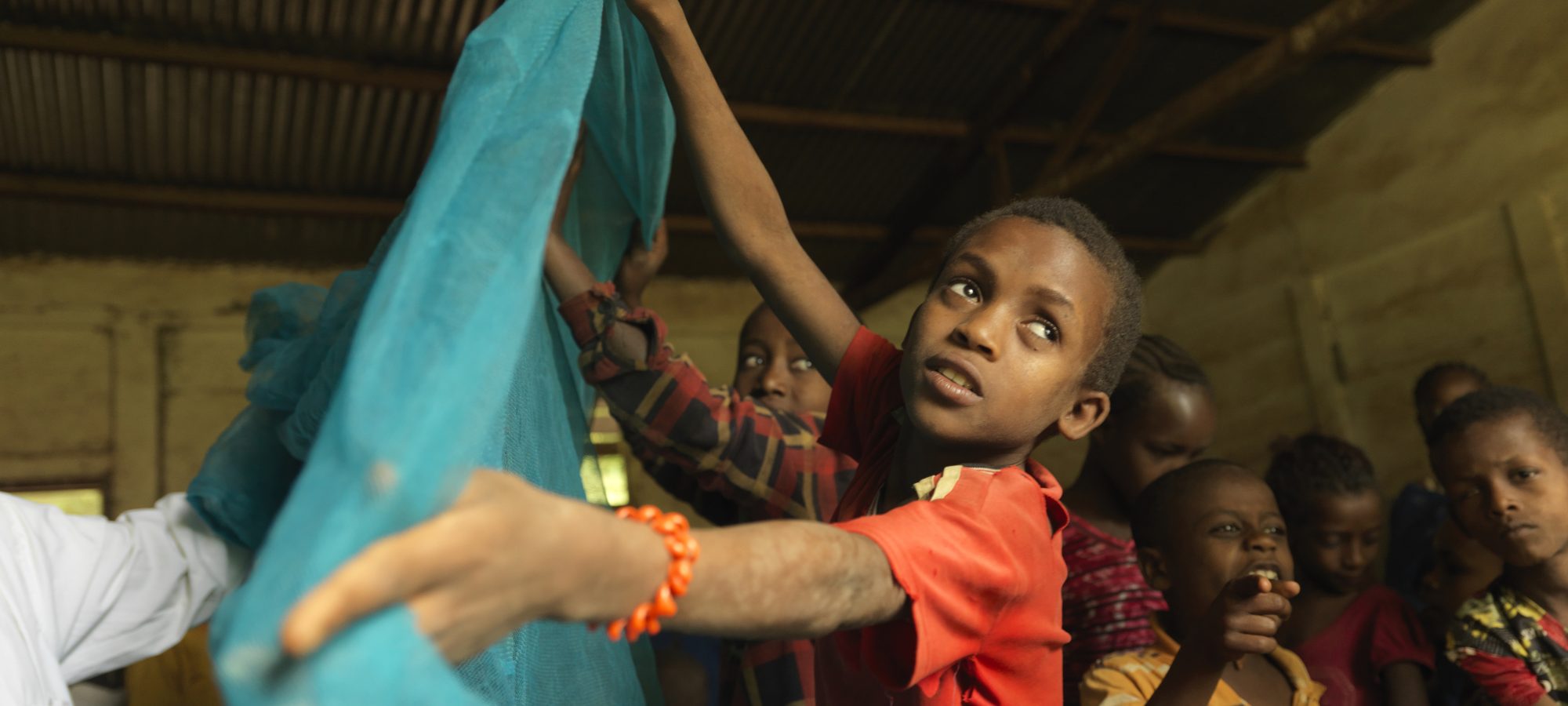This blog was written collaboratively by Shana Warren, Associate Director of Path-to-Scale Research & Research Scientist at Innovations for Poverty Action, a research and policy NGO, and Katherine Theiss-Nyland, Malaria Consortium’s Technical Director. They share insights on the evidence driving the control and elimination of malaria and reflect on the most pressing challenges and promising interventions to meet this vital goal.
Malaria is a major global health issue, and despite progress, there are still high rates of morbidity and mortality from the disease, particularly in Africa. The World Health Organization (WHO) reports that there were 249 million malaria cases in 2022—16 million more than in 2019. In Africa, malaria is one of the biggest killers of young children, with half a million children under five years old dying each year. This is exacerbated by lack of access to timely prevention and treatment and funding for the most vulnerable communities.
Malaria is a preventable and treatable disease, and there are more evidence-based tools to treat and prevent malaria than ever before. These tools include insecticide-treated bed nets, indoor residual spraying, chemoprevention (intermittent malaria preventive treatment for those most vulnerable to the disease, children under five and pregnant women), and within the past three years now two separate WHO-approved malaria vaccines (RTS,S and R21).
In this blog, we highlight interventions and innovations that are driving progress towards the control and elimination of malaria.
Insecticide-treated nets (ITNs), which remain effective for many years, are widely used to kill and repel mosquitoes that carry malaria. In 2007, a research and policy NGO Innovations for Poverty Action (IPA) conducted a study with Dr Jessica Cohen (Harvard University) and Dr Pascaline Dupas (Princeton University) in rural Kenya that demonstrated the importance of distributing insecticide-treated bed nets for free. This study influenced policies to provide free nets for pregnant women, aiming to reduce maternal and infant mortality. ITNs have been proven highly effective in reducing maternal anemia and infant mortality.
While bed nets remain highly effective, the emergence of resistance to drugs and insecticides in some mosquitoes necessitates testing and deploying the latest evidence-based research. In Nigeria, Malaria Consortium, a leading non-profit organisation specialising in the prevention, control and treatment of malaria and other communicable diseases among vulnerable populations, are collaborating with the national and Ondo and Anambra state malaria elimination programmes to implement a universal ITN replacement campaign using new insecticides—DuraNetPlus and PBO—to overcome resistance. The monitoring and evaluation component is studying the campaigns’ epidemiological and entomological impacts and outcomes of the ITN campaigns. Ongoing research like this is critical to inform decision-making to adapt and prioritise intervention strategies that best fit local contextual challenges.
After decades of research and development, preventative malaria vaccines are now becoming available. The World Health Organization has approved the RTS,S vaccine and most recently the R21 vaccine in October 2023. Both vaccines are shown to be safe and effective in preventing malaria in children and, when implemented broadly, are expected to have a high public health impact. However, capitalising on the potential of a widespread roll-out of these vaccines to ultimately eliminate malaria will require the same level of global investment and commitment that was made available for the scale-up of mass net distribution campaigns and the integration of routine childhood immunisation against polio, measles, and other childhood diseases. As with those scale-ups, community engagement and behaviour change communication will be key to promote the acceptance and uptake of malaria vaccines. Current work in Cameroon by Malaria Consortium has shown the particular importance of community engagement within conflict-affected areas.
To promote the integration of malaria vaccines among routine childhood immunisation, IPA, in collaboration with Dr Anne Karing (University of Chicago) and Dr Mattie Toma (University of Warwick), is partnering on a study with the Sierra Leone Ministry of Health. Together, we aim to scale up a simple, low-cost innovation to increase immunisation demand using a coloured bracelet which signals a child’s immunisation status. Each bracelet colour shows the child’s progress and timeliness in completing their routine immunisation schedule. This path-to-scale randomised controlled trial is using bracelets to incentivise the initiation and completion of all four doses of the new malaria vaccine in addition to the existing routine childhood immunisation schedule for children under two years. IPA will also be trialing the use of personalised SMS reminders in urban areas of Sierra Leone to remind caregivers to attend vaccination services, including for the new malaria vaccines, when their baby is due for immunisation.
We need to prioritise key enablers such as social behaviour change, surveillance, and response, along with capacity building within Ministries of Health and other partners on technical and management skills to effectively deploy interventions and achieve high coverage levels with newly available vaccines. Policymakers and funders also need to ensure the delivery of malaria interventions in hard-to-reach areas including those affected by conflict or displacement. These situations disrupt the malaria prevention ecosystem and increase vulnerabilities.
Making meaningful progress toward eliminating malaria requires shifting the way we approach the disease——more intentionally considering both the current challenges and anticipating what lies ahead.
If global targets to approach malaria elimination by 2030 are to be met, it will be necessary to use the tools and resources that are already available even more efficiently and, crucially, harness the power of innovation to optimise impact. Funders and policymakers need to draw on existing evidence to develop and test strategies to increase uptake of malaria vaccines and maintain the use of preventive measures such as bed nets. It will also be critical to expand the evidence base to new contexts, including locally promising interventions, and then rigorously test those methods to assess how to build and sustain holistic malaria prevention. Sufficient investment and commitment from the global community will be critical in delivering the multi-faceted solutions that are needed to solve a disease as complex as malaria.
